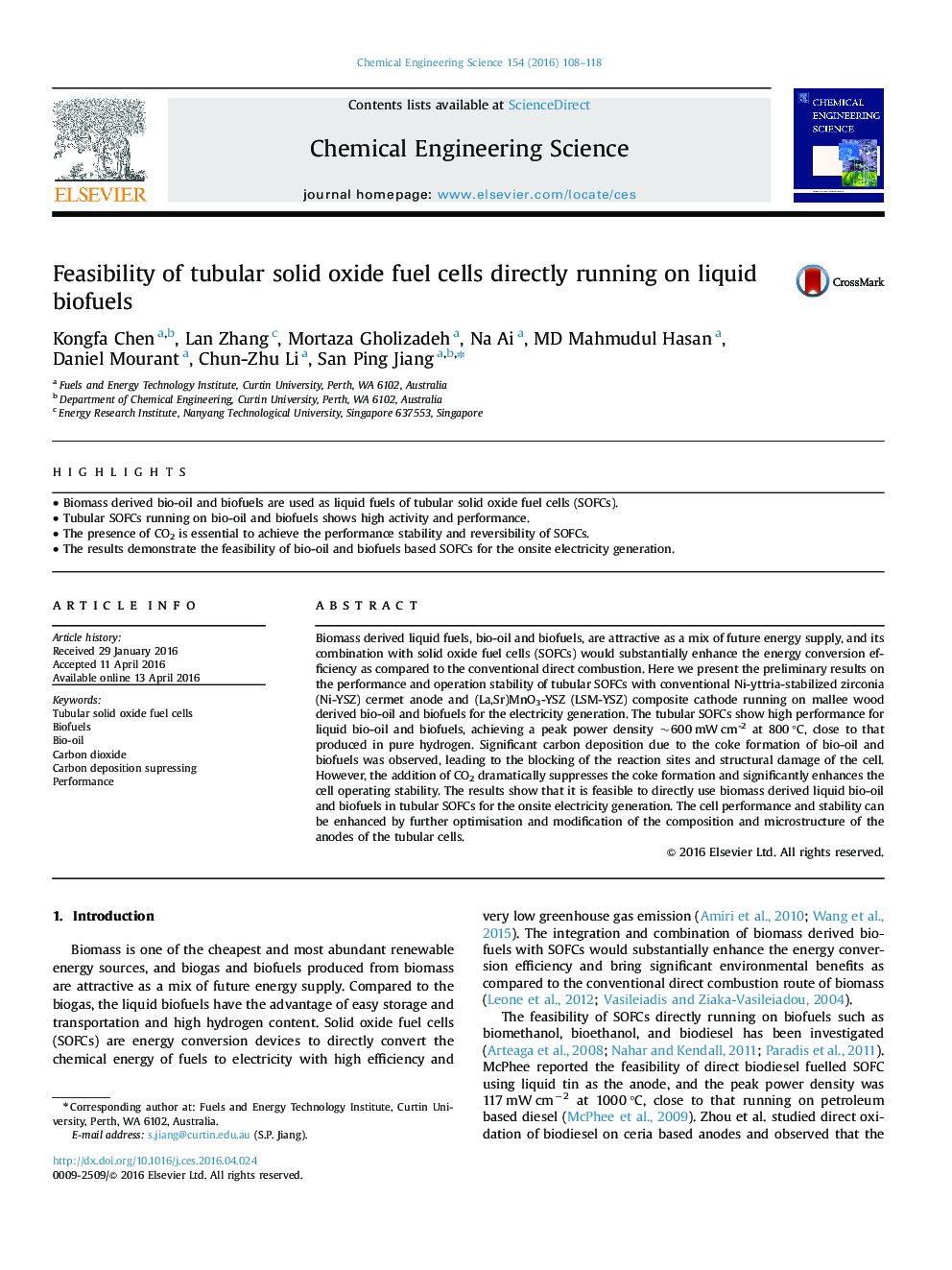| Article ID | Journal | Published Year | Pages | File Type |
|---|---|---|---|---|
| 6468024 | Chemical Engineering Science | 2016 | 11 Pages |
â¢Biomass derived bio-oil and biofuels are used as liquid fuels of tubular solid oxide fuel cells (SOFCs).â¢Tubular SOFCs running on bio-oil and biofuels shows high activity and performance.â¢The presence of CO2 is essential to achieve the performance stability and reversibility of SOFCs.â¢The results demonstrate the feasibility of bio-oil and biofuels based SOFCs for the onsite electricity generation.
Biomass derived liquid fuels, bio-oil and biofuels, are attractive as a mix of future energy supply, and its combination with solid oxide fuel cells (SOFCs) would substantially enhance the energy conversion efficiency as compared to the conventional direct combustion. Here we present the preliminary results on the performance and operation stability of tubular SOFCs with conventional Ni-yttria-stabilized zirconia (Ni-YSZ) cermet anode and (La,Sr)MnO3-YSZ (LSM-YSZ) composite cathode running on mallee wood derived bio-oil and biofuels for the electricity generation. The tubular SOFCs show high performance for liquid bio-oil and biofuels, achieving a peak power density ~600 mW cm-2 at 800 °C, close to that produced in pure hydrogen. Significant carbon deposition due to the coke formation of bio-oil and biofuels was observed, leading to the blocking of the reaction sites and structural damage of the cell. However, the addition of CO2 dramatically suppresses the coke formation and significantly enhances the cell operating stability. The results show that it is feasible to directly use biomass derived liquid bio-oil and biofuels in tubular SOFCs for the onsite electricity generation. The cell performance and stability can be enhanced by further optimisation and modification of the composition and microstructure of the anodes of the tubular cells.
